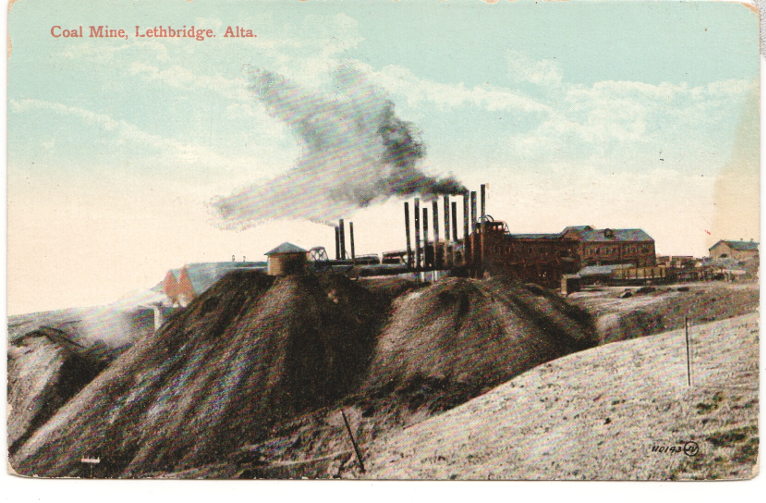Premier Jason Kenney, Canada’s most unpopular premier, has redefined the meaning of political cynicism in Canada.
Breaking promises and betraying Albertans appear to be constant themes of Kenney’s government. Its coal saga is a prime example.
In 2017, the aspiring premier vowed to “get the Alberta government out of the business of business… because when politicians are risking your money instead of their own, you might as well send them to the casino. I mean, they have no incentive to get it right.”
But as soon as he got into power in 2019, Kenney quickly jumped into bed with Australian coal miners intent on planting nearly a dozen open-pit coal mines in the province’s most critical watersheds in the north and south Saskatchewan river basins.
To assist the Aussie miners, the government killed the Coal Policy, which industry considered an impediment to “responsible resource development.” That’s because the Coal Policy banned open-pit mining on much of the eastern slopes. So it had to go.
Kenney didn’t consult with a single Albertan other than the Coal Association of Canada and its Aussie clients.
In striking contrast, the original 1976 Coal Policy was the product of three years of public consultations that ended with one theme: preserve the Rockies for its water and wildlife.
To hide the deed from the public, Kenney axed the policy on a Friday before a May long weekend during a pandemic.
At the same time, Environment Minister Jason Nixon proposed to amend the Oldman River Basin Water Allocation Order to take water set aside for irrigators and conservation and give it to Aussie coal miners such as billionaire Gina Rinehart, who owns the proposed Grassy Mountain project.
Meanwhile, Australian metallurgical coal miners, who own leases covering more than 1,000 square kilometres in the southern Rockies alone, applauded Kenney’s unqualified support as well as his mere one per cent royalty regime for metallurgical coal.
Albertans, however, did not appreciate the scale of the betrayal. Ranchers challenged the legality of cancelling the Coal Policy in court. Experts denounced the lousy history of coal in which developers over-promise and under-deliver.
Scientists warned about the legacy of selenium pollution. And municipalities pleaded for secure water supplies because coal mining is a water hog.
Unprecedented public opposition from hundreds of thousands of citizens from all political stripes finally forced the government to back up.
But Kenney, another politician in thrall to coal, did not back down.
Last January, his government abruptly reinstated the Coal Policy but did not cancel 200,000 hectares of new coal leases that had been granted in the interim. Nor did he cancel six massive coal exploration leases now carving up the foothills with drill pads and exploratory roads.
Energy Minister Sonya Savage then promised fulsome public consultation on the future of the eastern slopes.
Savage also promised that no mountain-top removal would be allowed in Alberta, even though an executive with the Grassy Mountain project promised to do just that in a federal hearing last year. (The Alberta government has its own Orwellian definition for open-pit mining.)
Pick your poison
Last week, Kenney’s pro-coal mining government unveiled the terms of reference for its five-member “coal policy committee.” (Surprise, the committee doesn’t include anyone with a background in agriculture, ranching or environmental science.)
The terms, which appear to be designed to mollify Australian coal miners, add more depth to the meaning of cynicism: the committee, which must produce a report by Nov. 15, can only talk to Albertans about coal.
Any public consultation about coal mining will be limited to where it will occur and in what form: open-pit mining; underground mining; or good, old-fashioned mountain-top removal.
It’s a pick your poison consultation.
Ian Urquhart, the conservation director of Alberta Wilderness Association, read the terms and simply called them “a staggering betrayal of the public’s trust.”
The betrayal, as betrayals must be, is big and bold: it means there will be no public discussion about water and watersheds by the coal committee.
That means no consultation about how the mountains create, collect, filter and distribute water that eases the thirst of two million people and their associated economies in arid land becoming drier with climate change.
No talk about defending the blue beauty of the Rocky Mountain foothills and its iconic species: cutthroat trout, elk and grizzly bears.
No economic analysis on how coal mining destroys other industries like ranching, irrigation and tourism and leaves unfunded messes behind for future generations.
No examination of the science on how piles of coal rubble leach toxic selenium that can kill fish, birds and even cattle over hundreds if not thousands of years.
And not a word about First Nations, for whom the Rockies represent sacred ground, except that they will be separately serenaded on the benefits of coal.
‘Herded down a chute’
At the Alberta Urban Municipalities Association convention last week, Mayor Jim Willett of Coutts, Alberta, asked Environment Minister Nixon if the government hadn’t missed some essential concerns and if his department was going to do a supplemental review.
“We all thought a review of the Coal Policy would include a discussion surrounding water sources and usage and the land use act,” said Willett. “Is there a plan for another panel to discuss the points Albertans are most concerned about?”
Willett asked that of perhaps the only environment minister in North America to zealously support coal mining. In 2019, Nixon wrote a letter of support for an Australian coal mining company before it was even listed on the Australian stock exchange. But he wasn’t as solicitous of the mayor. Nixon provided Willett with what the mayor called a “non-answer.”
Kenney’s disregard for the welfare and interests of Albertans is also on display in the online survey designed to inform the public direction of the so-called coal committee. It ended Monday.
The survey reads like it was written by the Coal Association of Canada. But Energy Minister Savage called it an “ice breaker.” Here is an icy sample:
“Are you familiar with uses for metallurgical coal?
“To what extent does the management of Alberta’s coal resources affect you?
“How important do you think the economic benefits of coal development are to Alberta and its communities?”
On a video posted on Twitter, country music star Corb Lund described the questions as disingenuous and misleading. “In my opinion, the government has every intention on allowing the foreign coal companies to go up there and dig for coal and ruin the place and leave us with the bill,” said Lund, who lives downstream of the proposed mines.
Lorne Fitch, a retired government biologist, caustically described the survey as a diabolical example of social engineering, given that more than 70 per cent of Albertans have said no to coal mining in the Rockies.
“It reminds me of cattle being herded down a chute, to a predictable endpoint at the slaughterhouse,” said Fitch.
Fitch then compared the survey to a mad surgeon trying to convince a healthy patient that he needed to lose some appendages. “Which arm or leg do you want amputated,” asks the surgeon. And “would you like an anesthetic to go with that?”
Kenney’s dedication to Aussie mining interests in wake of his sagging popularity can best be explained as a continuation of Stephen Harper’s pro-mining policies. (Harper is Kenney’s silent advisor.)
The former Harper government not only supported mining companies abroad but changed the focus of foreign aid to benefit them. The Harper model encouraged the criminalization of resistance by rural communities to mining both home and abroad; the lowering of taxes and royalties; the removal of environmental restrictions; the streamlining of regulations; and the easing of permitting.
Tellingly, one of Kenney’s first acts as premier was to introduce Bill 1, which came into law on June 17, 2020. It made it illegal to blockade or protest critical infrastructure such as open-pit coal mines.
The ongoing resistance
Meanwhile, the battle against more than a half-dozen proposed coal mines that would forever change more 1,000 square kilometres of the Canadian Rockies continues on multiple fronts and from every political corner.
Even long-time conservative strategist Rainer Knopff, a member of the right-wing Calgary School openly condemned Kenney’s coal game. “Trust is at a low ebb, especially since the government clearly remains open to new surface mines in the eastern slopes,” he recently wrote in paper for University of Calgary’s School of Public Policy.
“The government can put an end to this imbroglio by calling a halt to new coal mining in the eastern slopes. It should do so because the environmental and political risks of mining outweigh its benefits.”
Four separate initiatives including one led by Ecojustice have asked federal Environment Minister Jonathan Wilkinson to intervene and order an environmental assessment of the Tent Mountain project, which straddles the B.C. and Alberta border.
“This mine is part of a suite of intensive coal development projects… that will cause irreversible, devastating harm to this region,” said David Khan of Ecojustice in a press release.
Two of southern Alberta’s largest First Nations, the Siksika and Kainai, have demanded the same.
A petition launched by Latasha Calf Robe with the Niitsitapi Water Protectors and signed by 18,000 Canadians has also demanded that Wilkinson intervene to protect Canadian interests.
That petition asks for a “regional assessment of the impacts of all proposed coal developments and exploratory activity in Southwest Alberta on Treaty and Aboriginal rights, water quality, species at risk and the environment.”
Meanwhile, ranchers and landowners, who were not surprised that Kenney betrayed the public trust, have launched two separate studies on the impacts of proposed mines.
The Pekisko Group, which represents ranchers whose grazing lands will be destroyed by the mines, has hired toxicologist Mandy Olsgard to model and study how much coal dust particulate will flow off the proposed mines into the lungs of cattle and people living along the eastern slopes. Fine coal dust particles can cause heart attacks and neurological problems.
At the same time, the Livingstone Landowners Group has hired a group of prominent ecologists led by Brad Stelfox to assess the impacts of selenium pollution from the proposed mines in the Oldman watershed.
That watershed, which flows into the South Saskatchewan, is already under stress due to climate change and over-allocation of water.
Alberta’s New Democrats have also introduced a private member’s bill into the legislature. The NDP, who favoured coal mining in the past, have recently seen the light (and measured the weight of public opinion).
Their proposed Eastern Slopes Protection Act would prohibit all future coal mining activity on the eastern slopes on sensitive lands, rated category two, in an effort to protect watersheds like the Oldman River Basin. It would also cancel all existing leases on that land.
And it would halt proposed coal mines on category three and four lands in the Rockies, such as Tent Mountain and Grassy Mountain, until consultations with First Nations, municipalities and ranchers and local landowners decide on an enhanced regional plan.
Thirty-five researchers at the University of Alberta just released a letter asking all members of Kenney’s divided caucus to support the private member’s bill.
“Decades of research by scientists from all over the world have shown that young animals, whether they be flies, fish or humans, are acutely sensitive to toxins dissolved in water,” wrote the researchers.
“There is no reliable method to stop leaching of hazardous waste produced by surface coal mining into groundwater where, inevitably, it will pollute precious watersheds we all depend on that are already under severe stress.”
But the Kenney government said it wouldn’t consider the bill.
Laura Laing, a rancher who challenged the Kenney government in court, now predicts a long and bitter fight.
“I believe in the voices of Albertans,” she said.
It is clear what the Kenney government believes in. And it’s not Albertans. ![]()
Teaser photo credit: Coal mine Lethbridge Alberta, Wikimedia Commons, https://commons.wikimedia.org/wiki/File:Coal_mine_Lethbridge_Alberta_(41420919734).jpg





